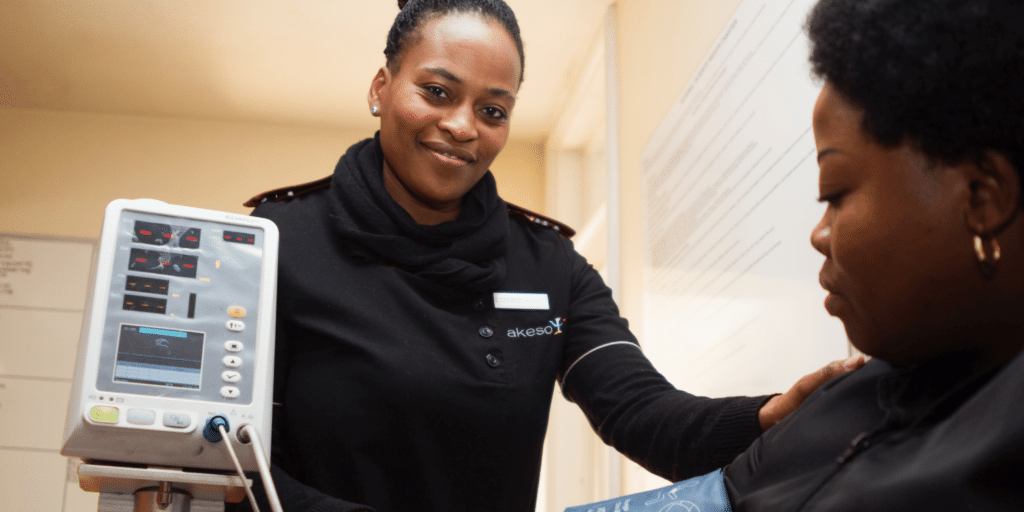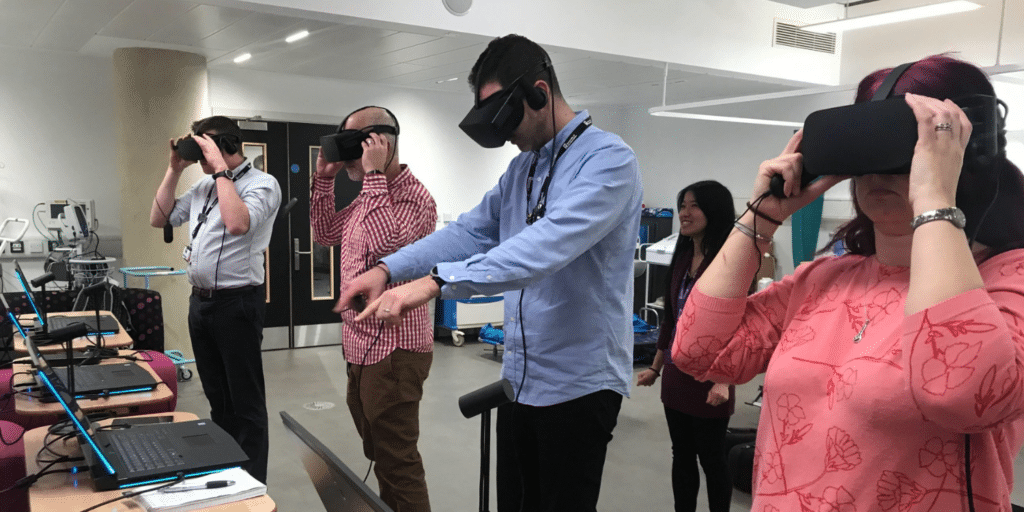This week is Healthcare Simulation week and as part of the celebrations we take a look at five reasons to salute the wonderful practice of simulation…
Simulation improves patient care
By far the most compelling benefit of simulation in healthcare is the positive impact that it can have on patients. After all, a drive to improve patient outcomes and the quality of their care is at the basis of healthcare education systems worldwide…
Providing future healthcare workers with the resources to optimize patient care – be that through effective clinical acumen, time management, communication and everything else in between – is the bedrock of a successful healthcare system.
Essentially, simulation sets trainee doctors and nurses up to effectively make people better when they come to practice in real life. In 2012, Benjamin Zendejas (Mayo Medical School, Rochester) set out to prove how far simulation training promotes positive results for patients. The findings were powerful; simulation-based education was shown to be directly linked to patient benefits when compared to both non-simulation-based training and instances where no intervention was given at all.
Linked to this is the propensity for simulation to reduce patient harm. No clinician wants to inadvertently complicate or worsen a patient’s condition but medical error is the third leading cause of death in hospitals worldwide. With simulation, we are able to reproduce patient care sequences with all the clinical complexities of real life scenarios allowing clinicians to cover all the bases when treating real people.
Ultimately, simulation-based training produces more competent healthcare professionals which can only be beneficial in improving the quality and safety of patient care.
Simulation inspires confidence
Few on-boarding periods of a new job can be as daunting as starting out as a junior doctor or nurse. Fetching coffees, navigating the intricacies of a Kafkaesque office bureaucracy, whilst remembering not to raid Belinda from Accounts’ personal HobNob stash seem like a walk in the park compared to a 12-hour shift filled with hundreds of patients with complaints ranging from the utterly absurd to the genuinely life-threatening.
To make matters worse, strained resources, overcrowded hospitals and staff shortages mean that most junior healthcare professionals face much of this without the necessary support. With simulation, clinicians are able to practice managing acutely unwell patients without causing real patient harm if it goes wrong. In this way, practicing emergency care during training can take the edge off the intimidating world of real life practice.
This is something we’ve been made directly aware of at Oxford Medical Simulation through the roll-out of our virtual reality simulation platform at Oxford University. There, learners told us that, “it’s really good to get the experience of being put in the driver’s seat, of making the decisions…I think it will give me more confidence to make those decisions [in real life]”.
What is more, simulation-based training as been shown to improve junior clincian’s confidence in pushing for improved patient outcomes within real life treatment. Healthcare training is inherently hierarchical and this can often mean that trainees are afraid to speak up when they think a senior colleague is not administering the right kind of treatment.
In a study carried out by the University of Harvard and Massachusetts General Hospital, simulation was shown to increase the frequency and quality of interventions by Residents in the care suggested by their seniors.
Simulation can therefore be seen to not only improve patient care by bolstering the doctor or nurses confidence in their individual practice, but also promoting appropriate assertion in challenging a treatment plan when they think there might be a better way.
Simulation lets us learn from our mistakes
In our personal and professional lives we learn best from the mistakes we make. Cultivating an attitude that embraces mistakes as an inevitable part of life that can be mined for valuable lessons is an effective way to successfully avoid making mistakes in the future. Within the context of healthcare however – where the price of our mistakes can be fatal – this kind of philosophy can be hard to accept.
In practicing simulation a safe-space is created in which healthcare professionals can refine their clinical skills without the risk of harming real patients. When effective debrief is built into simulation, the learnings taken from this form of training are invaluable. With learners identifying strengths and areas for improvement in a supportive atmosphere. This is a powerful combination that mitigates against these mistakes being made in real life.

Further, the emphasis on debrief engenders good habits of self-reflection for trainees to take through their entire professional careers. When clinicians are used to assessing their own practice regularly they are personally assuring the quality of the care they provide.
Simulation works across all healthcare disciplines
Simulation works effectively across all healthcare domains including; medicine, nursing, paediatrics, mental health, surgery, emergency care, life-saving and more. What is more, simulation surpasses all other training mechanisms in touching the most comprehensive set of skills ranging from specific procedures to communication and teamwork.
The controlled nature of simulation means that institutions can ensure learners are exposed to as wide a range of clinical presentations as possible to build up depth of knowledge. Stress conditions can be put in place to mirror real life scenarios and test trainees ability to cope under pressure. The debrief that follows these experiences means that learnings are not lost or left open to individual interpretation.

Simulation is also deliverable across multiple platforms. Mannequin-based simulation has long been used to produce life-like conditions in which learners can practice patient management. Similarly, the use of standardized patients in simulation is effective in creating a true-to-life environment where learners are able to interact with a real person. Increasingly, virtual reality is being used to deliver repeatable, immersive simulation at scale.
Simulation is practiced worldwide
We’ve often heard it said that – if you do not work in healthcare – simulation is probably the biggest industry that you’ve never heard of. When you stop to think about it – it makes sense. You wouldn’t expect pilots to fly planes without practicing in simulators first – so why should we expect the people taking care of our health not to do so as well?
There are hundreds of organisations, institutions and individuals doing wonderful things in simulation across the world. Organisations such as SSH and ASPiH organise renowned international events like the International Meeting on Simulation in Healthcare (IMSH) to encourage knowledge sharing and best practice.
As part of Healthcare Simulation Week, Boston Children’s Hospital hosted a Facebook Live event to give the community insights into how its state-of-the-art paediatric simulation center works. Having run an immeasurably impactful simulation programme for over a decade, BCH has now taken is simulation capabilities on the road. Offering over 50 courses at nine institutions across eastern Massachusetts – its SIM Network initiative shows that simulation best practice can be distributed at scale.
In the UK, the NHS Diabetes Programme is using simulation to directly impact the treatment of people with Type 1 diabetes. Using the OMS virtual reality simulation platform, doctors are able to practice treatment before they see real life patients. Diabetes treatment can be notoriously tricky and for many doctors the first time they have to manage diabetes-related cases is in real life. Using simulation, the NHS is able to train doctors on the specific complexities to look out for, without compromising the quality of patient care.

The healthcare team at St Luke’s University, Pennsylvania, have customised a freight truck to serve as a mobile simulation suite. Offering training opportunities across disciplines, people that live in remote areas that once may have been unable to access a healthcare education are now able to access valuable resources to further their careers. In this way, St Luke’s mobile simulation operation is promoting diversity and social mobility in healthcare and beyond.
These are just a few examples of the ways in which simulation is being leveraged to improve healthcare training and education, and in turn, our healthcare systems and standards of patient care.
Happy Healthcare Simulation Week!
